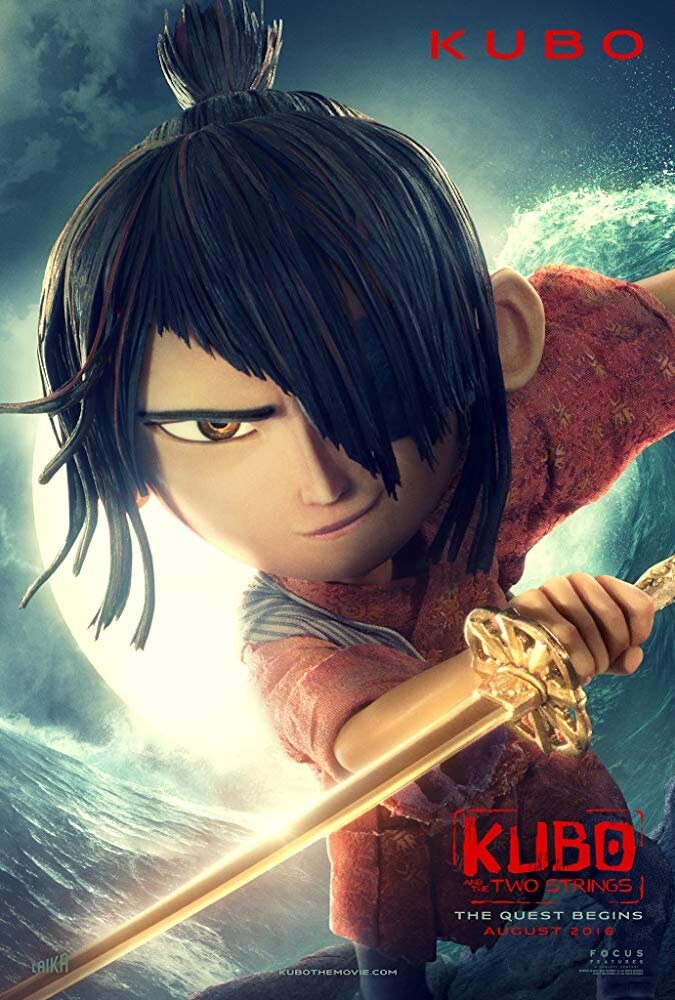Kubo and the Two Strings
/Oh, Kubo. He doesn't hate you. He wants to make you just like him. Blind to humanity as I once was. Only then can you take your place beside him as part of his family. Cold and hard and perfect.
~ Monkey
quick fox: A | Silver
winding dragon
Imagine taking a photograph. Move your leg an inch. Snap another photo. Another inch; another photo. Now repeat until you’ve walked from where you’re standing to the nearest coffee shop. It would be excruciating (but worth it to the average caffeine-deprived college student). Now imagine creating a 100-minute film this way. Most people’s reactions would be similar to being told to write a 20-page paper on the green light symbolism in The Great Gatsby.
But Laika, the creators of Coraline (2009) and The Boxtrolls (2014), not only relishes in the challenge, it sets a new standard in the world of stop-motion entertainment.
Kubo and the Two Strings (2016) opens with the voice of Kubo (Art Parkinson) telling the audience, “If you must blink, do it now.” And in the space of one blink, the audience is transported to a stormy sea. Kubo as a baby—his mother Sariatu (Charlize Theron) clinging to him while desperately keeping their flimsy boat afloat. A tremendous wave towers over the heroes. A flick of her wrist with her bachi strums the strings of her shamisen and a burst of blue magical energy parts the seas. Another wave creeps behind and engulfs the boat, swirling mother and son in its watery depths until it releases them, washing them ashore.
The Moon King (Ralph Fiennes), Sariatu’s father, has disowned his daughter for falling in love with a human man, and has sent his other daughters (Rooney Mara) to hunt down Sariatu and Kubo. Years later, they are discovered in a small village, and Kubo embarks on a quest to find his father’s magical armor to defend himself against the Moon King. Along the way, Kubo receives aid from Monkey, who has come to life from a wooden snow monkey charm his mother gave him, and Beetle (Matthew McConaughey), a samurai soldier in the form of a beetle.
Describing the visuals of Kubo and the Two Strings in words is no replacement for this artistic feast. The fluidity of the movement, detailed textures, illuminated colors—for long periods they made me forget that I was watching a stop-motion feature. The most impressive aspect is the scale of that creatures Laika created. Their crowning achievement is a 16-foot tall, 400-pound skeleton monster that used a complicated rigging system to move the giant puppet for each frame. According to one of the crew members, a slow day with the mammoth creature would be eight frames a day for twelve hours of work. Keep in mind, the scene with the skeleton lasts for about five minutes.
If Kubo and the Two Strings has any faults, it’s that we don’t see as much bonding among Kubo, Monkey, and Beetle as I would have liked. For example, Finding Nemo has a similar setup—Marlin and Dory chance upon characters and locations that force them to understand each other better. The emotional backdrop to the jellyfish scene is about Marlin not trusting Dory’s instincts and getting them in a perilous situation. By comparison, the trio of Kubo, Monkey, and Beetle don’t experience the same parallels between the physical and emotional dangers they encounter. The movie is more about the action of the situation than how the situation furthers their relationship.
But personally, it’s a pretty negligible complaint for a film that would have won Best Animated Feature in the 89th Academy Awards if not for Disney’s Zootopia. There’s a furious debate among movie buffs whether stop-motion is worth the time and effort anymore in the world where CGI reigns supreme. Kubo and the Two Strings might have single-handedly put those questions to rest, utilizing innovative robotic technology and 3-D printing to show that stop-motion still has a lot more to give audiences.
For anybody who loves animation, Kubo and the Two Stringles is well worth the viewing. It’s an artistic achievement wrapped in a dark fairy tale, and has soared to the top of my all-time favorite animated movies.



